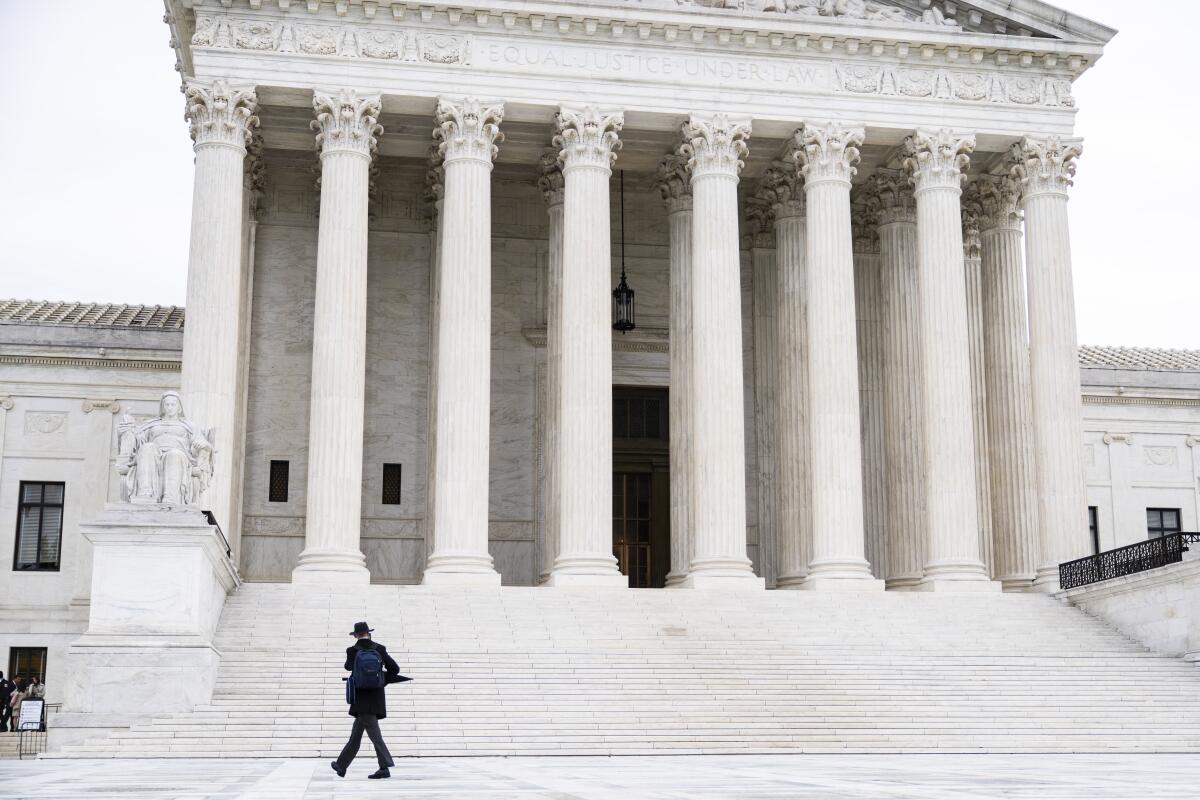Editorial: Supreme Court’s commonsense gun rights ruling will keep Californians safer — for now

- Share via
It appears there are some limits to the U.S. Supreme Court’s fundamentalist approach to constitutional interpretation. Thank goodness. The court on Friday rejected an argument that Texas’ law to temporarily disarm people who present a credible threat does not violate the 2nd Amendment’s protection of the right to keep and bear arms.
That makes common sense and will help protect people in effective “red flag” states such as California, at least for the present. A civil stay-away order may include a requirement that the person relinquish weapons — importantly, without being first found guilty of a crime.
The conservative majority’s interpretation of the 2nd Amendment glorifies a bygone era while keeping modern Americans powerless to legislate for today.
The case was widely seen as a test for the court majority’s principle that restrictions of constitutional rights must have some historical precedent.
Because there were no domestic violence restraining orders at the time the 2nd Amendment was adopted in the 18th century or the 14th Amendment in the 19th century, a federal appeals court in Texas ruled, the civil order that disarmed Zackey Rahimi was invalid — even though he had a long and troubling history of gun violence and even though he made credible threats against his ex-girlfriend.
Only Justice Clarence Thomas dissented from Friday’s decision against Rahimi, although other justices wrote separate concurring opinions to offer their own nuances to the application of the originalist doctrine.
The suspect in the mass shooting in Lewiston is said to be a military reservist with a history of mental issues. He’s no more or less typical than other U.S. mass shooters.
The majority opinion was nevertheless grounded in the doctrine, asserting that the “tradition of firearm regulation allows the Government to disarm individuals who present a credible threat to the physical safety of others.”
The practical implication is that states are not left completely powerless to regulate firearms in an era in which gun violence is an increasing threat. That’s a good thing for Americans, who have a right to be protected not just against their government, but against people who would hurt them while hiding behind the protection of constitutional provisions if too broadly applied by the Supreme Court.
The ruling comes on the heels of the court’s decision striking down a federal regulation banning the use of “bump stocks,” which can permit a semiautomatic weapon to fire as rapidly as machine guns, which are generally prohibited.
Reasonable state gun restrictions were widely presumed valid until the court’s 2008 opinion in District of Columbia vs. Heller, which struck down a law restricting possession of guns at home. Two years ago, in New York Rifle & Pistol Assn. vs. Bruen, the court struck down a law restricting concealed guns in public — and more fully articulated its view that “history and tradition” should guide constitutional interpretation.
The Bruen decision led the appeals court in Texas to strike down the restriction in the Rahimi case. That poses the question: Did the court in Friday’s decision intend to walk back its overly expansive Bruen ruling? The answer to that won’t come until it takes up more 2nd Amendment cases.
More to Read
A cure for the common opinion
Get thought-provoking perspectives with our weekly newsletter.
You may occasionally receive promotional content from the Los Angeles Times.












